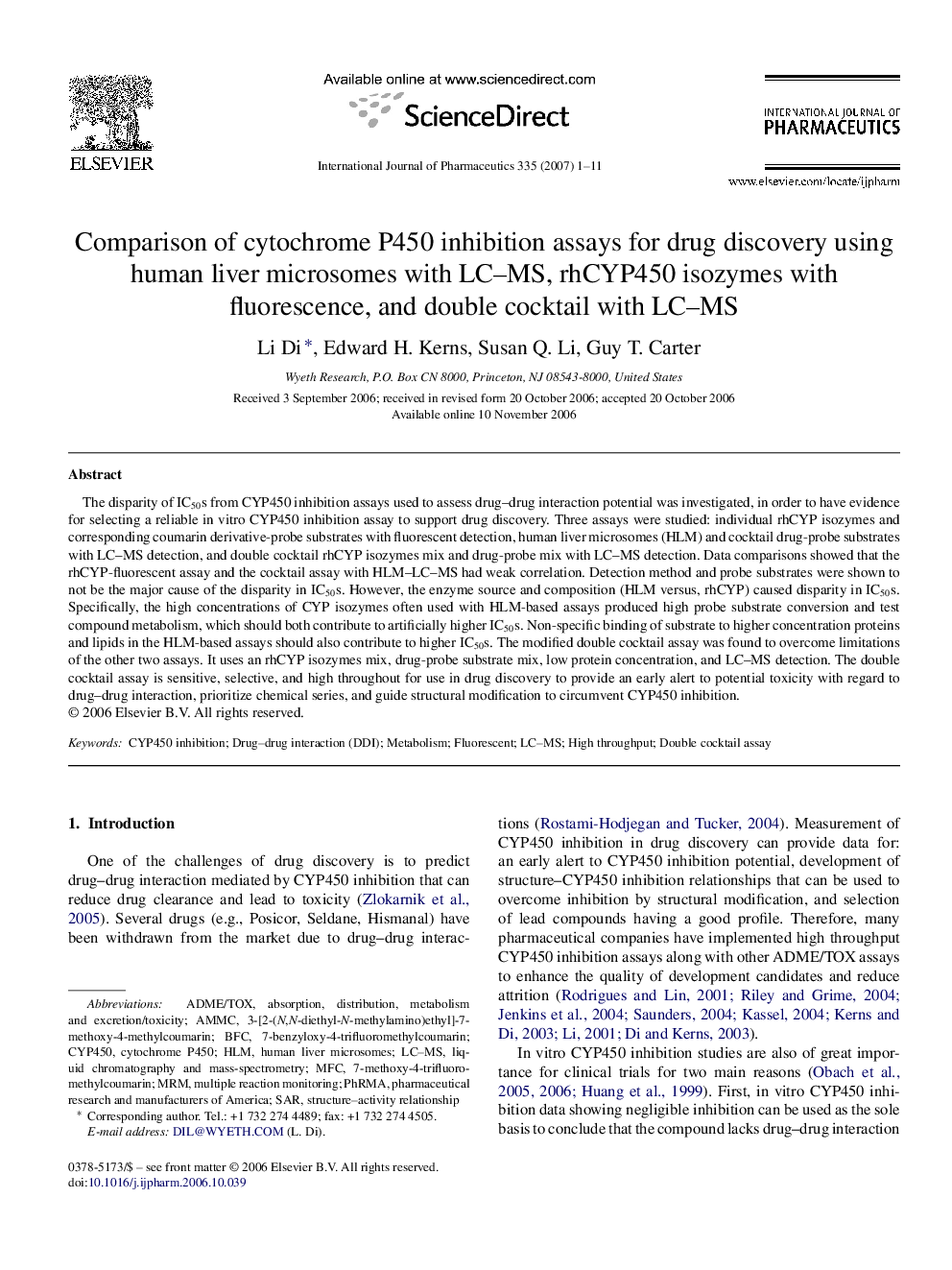| Article ID | Journal | Published Year | Pages | File Type |
|---|---|---|---|---|
| 2506247 | International Journal of Pharmaceutics | 2007 | 11 Pages |
The disparity of IC50s from CYP450 inhibition assays used to assess drug–drug interaction potential was investigated, in order to have evidence for selecting a reliable in vitro CYP450 inhibition assay to support drug discovery. Three assays were studied: individual rhCYP isozymes and corresponding coumarin derivative-probe substrates with fluorescent detection, human liver microsomes (HLM) and cocktail drug-probe substrates with LC–MS detection, and double cocktail rhCYP isozymes mix and drug-probe mix with LC–MS detection. Data comparisons showed that the rhCYP-fluorescent assay and the cocktail assay with HLM–LC–MS had weak correlation. Detection method and probe substrates were shown to not be the major cause of the disparity in IC50s. However, the enzyme source and composition (HLM versus, rhCYP) caused disparity in IC50s. Specifically, the high concentrations of CYP isozymes often used with HLM-based assays produced high probe substrate conversion and test compound metabolism, which should both contribute to artificially higher IC50s. Non-specific binding of substrate to higher concentration proteins and lipids in the HLM-based assays should also contribute to higher IC50s. The modified double cocktail assay was found to overcome limitations of the other two assays. It uses an rhCYP isozymes mix, drug-probe substrate mix, low protein concentration, and LC–MS detection. The double cocktail assay is sensitive, selective, and high throughout for use in drug discovery to provide an early alert to potential toxicity with regard to drug–drug interaction, prioritize chemical series, and guide structural modification to circumvent CYP450 inhibition.
